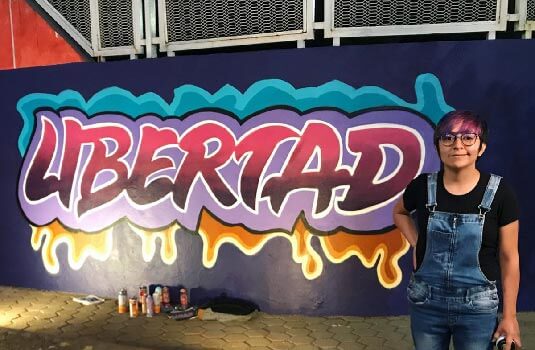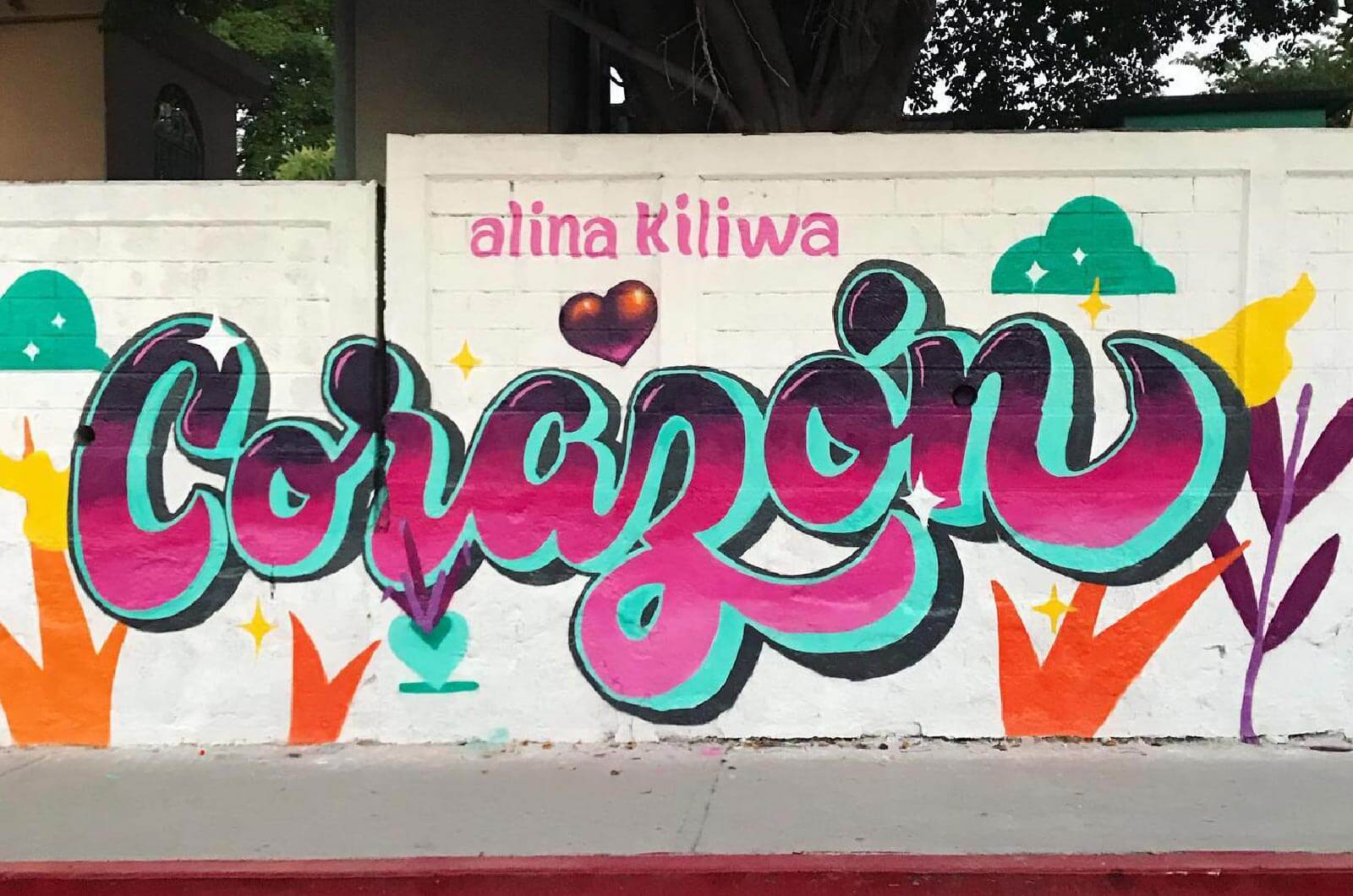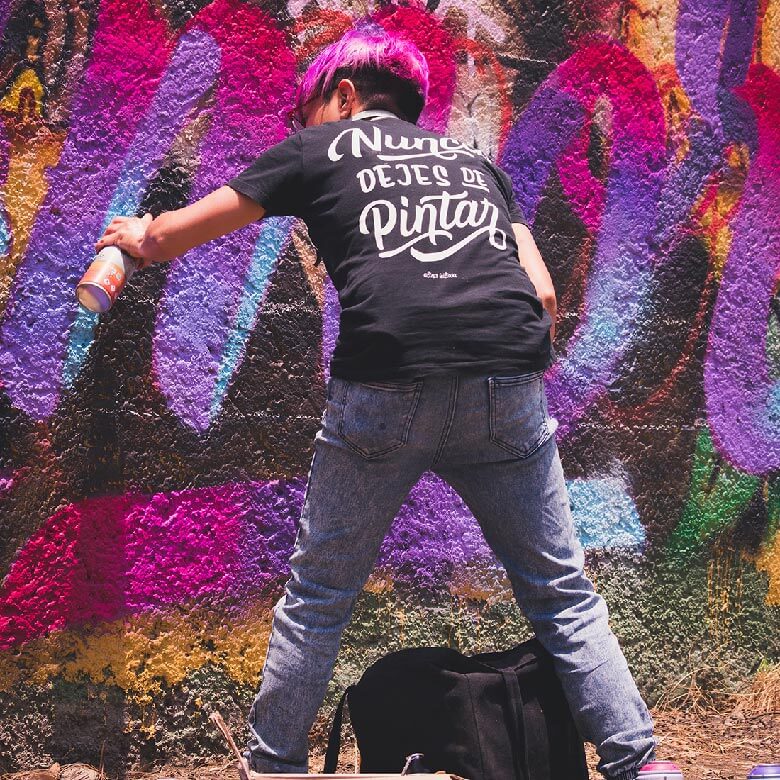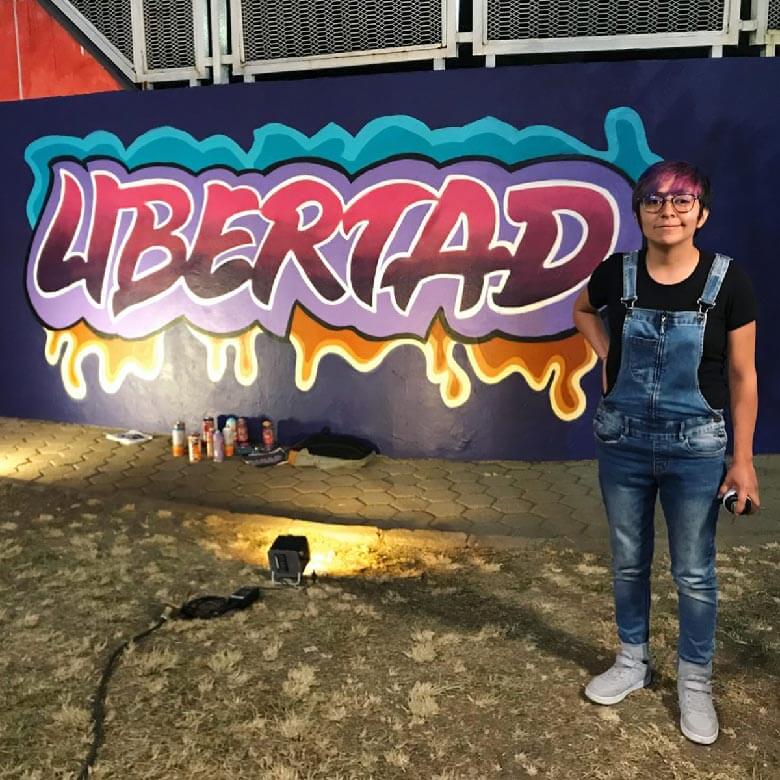
 Alina Kiliwa is a sign writer, calligrapher, muralist and letter artist from Mexico City. Her interest in letters began as a child when she would admire signs around the city. She studied design and started taking calligraphy courses whilst teaching herself to produce signs. Now she works as a full-time sign writer, with one big thing in common with graffiti writers: letters are her passion. MTN World has been a fan of the Mexican signwriting tradition for some time and we’re glad to present an interview with an authentic master of the craft.
Alina Kiliwa is a sign writer, calligrapher, muralist and letter artist from Mexico City. Her interest in letters began as a child when she would admire signs around the city. She studied design and started taking calligraphy courses whilst teaching herself to produce signs. Now she works as a full-time sign writer, with one big thing in common with graffiti writers: letters are her passion. MTN World has been a fan of the Mexican signwriting tradition for some time and we’re glad to present an interview with an authentic master of the craft.

 What is your name as an artist? Where are you from and where do you live? I’m Alina Kiliwa and I live in Mexico City. Can you explain what a ‘rotulista’ (sign writer) does? How did you pick up the trade? Rotulos are sign that are expression of popular graphic art, representing a form of communication and design in the urban landscape. They include sets of graphic elements like images and handwriting painted on walls, facades, fences, tarpaulins and other surfaces to communicate different information such as commercial slogans, institutional campaigns, political messages and concert adverts, among other things.
What is your name as an artist? Where are you from and where do you live? I’m Alina Kiliwa and I live in Mexico City. Can you explain what a ‘rotulista’ (sign writer) does? How did you pick up the trade? Rotulos are sign that are expression of popular graphic art, representing a form of communication and design in the urban landscape. They include sets of graphic elements like images and handwriting painted on walls, facades, fences, tarpaulins and other surfaces to communicate different information such as commercial slogans, institutional campaigns, political messages and concert adverts, among other things.  On an aesthetic level, Mexican sign writing consists of an inexhaustible source of typographic solutions and decorative elements such as drawings, logos, caricatures and realistic representations of objects. The letters are a constant in this form of communication. These artists are known as rotulistas, letristas or pintores and are the creators of these popular graphics. I found out about the trade from a young age when I first saw a sign writer working.
On an aesthetic level, Mexican sign writing consists of an inexhaustible source of typographic solutions and decorative elements such as drawings, logos, caricatures and realistic representations of objects. The letters are a constant in this form of communication. These artists are known as rotulistas, letristas or pintores and are the creators of these popular graphics. I found out about the trade from a young age when I first saw a sign writer working.
"It’s art and culture because it gives identity to cities"
Do you see it as illustration, art, culture, or industry? It has a little bit of everything. Some signs are combined with illustration for give the image more impact, or by request of the client. It’s art and culture because it gives identity to cities and it’s also an industry because the signs always a way to communicate or sell something. It seems that Mexico has a special tradition of sign writing. Are there any artists, styles, or regions that have influenced you? The big signs that announce dances on fences around Mexico are the ones that I’ve always liked the most, and in part, my work on a large scale or that’s more focused on moralism takes great influence from them.
It seems that Mexico has a special tradition of sign writing. Are there any artists, styles, or regions that have influenced you? The big signs that announce dances on fences around Mexico are the ones that I’ve always liked the most, and in part, my work on a large scale or that’s more focused on moralism takes great influence from them.
"I think my whole background and who I am is now part of my work and my sexuality is a part of me."
Are there municipal regulations or restrictions on what can be painted – or not? In Mexico there are no regulations for what can be painted, the rules are set by the owner of the business. Only in some places like special old towns there are some regulations in the use of colors which are about homogenizing adverts, whether handmade or not. Do you consider your sexuality important in your work? I think my whole background and who I am is now part of my work and my sexuality is a part of me. Have you found more support or criticism for expressing your sexuality openly? Yes, usually in social networks there are lots of haters. But for me, they are people who aren’t worth my time. In my life I try to relate to people like my family and friends who don’t question my sexual preferences, who see it as something normal.
Do you consider your sexuality important in your work? I think my whole background and who I am is now part of my work and my sexuality is a part of me. Have you found more support or criticism for expressing your sexuality openly? Yes, usually in social networks there are lots of haters. But for me, they are people who aren’t worth my time. In my life I try to relate to people like my family and friends who don’t question my sexual preferences, who see it as something normal.  Check out a video of Alina in action during her recent visit to Barcelona here. Wanna learn how to hand-paint signs like Alina? Sign up for her Domestika course here.
Check out a video of Alina in action during her recent visit to Barcelona here. Wanna learn how to hand-paint signs like Alina? Sign up for her Domestika course here.by mtn-world via Montana World

Keine Kommentare:
Kommentar veröffentlichen